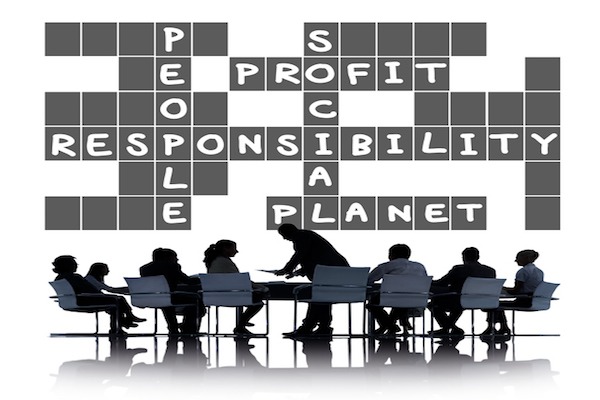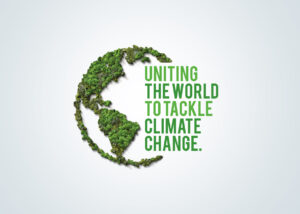4 helpful tips for making the case for your ESG program
When it falls to the comms team to show the effectiveness of your ESG work, here’s how you can be ready to step up and prove your value.

If you are like most professional communicators working in a corporate environment, you’re aware of a new operating standard that has taken traditional corporate social responsibility (CSR) programs to a higher level—ESG, or environment, social, and governance. While CSR programs typically refer to a company’s accountability on social matters, ESG elevates those activities to make them measurable in a way that shows the bottom-line impact of corporate social values, and more importantly, actions.
There is ample evidence to support the “why” for creating an ESG program: America rejoining the Paris Climate Accords; rallies for important social causes like Black Lives Matter and LGBTQ rights; a new generation of workers who want to work for companies that are committed to social justice and environmental sustainability; the buying power of younger consumers who demand products and services from companies that are socially responsible; investors who clamor for more disclosure on ESG issues and demonstrations of progress; and risk managers and insurers who are asking tough questions about ESG plans.
Here’s what you need to know about the “how”—because making the case for an ESG program’s proven effectiveness typically falls on the communications and marketing team.
Below are some tips to help frame an effective plan:
1. Identify your key audiences.
Communicating your ESG efforts begins with identifying audiences that are affected by an organization’s position on ESG issues. Interested stakeholders usually include employees, board members, customers, suppliers, investors, government agencies, media and advocacy groups.
By 2029, Gen Z and millennials will make up 72 % of the workforce, and social responsibility matters to them. Forty percent of them will not accept a job with a company that is not inclusive; they are willing to accept lower pay to work for companies that make a difference in society. Younger generations also represent a growing consumer population, and they are asking hard questions about the products and services they buy. They want to support companies that work towards carbon neutral production and advocate for equity and justice.
Investors are also demanding it. Business-to-business customers are asking their suppliers if they report based on ESG. Communications teams must identify and differentiate these audiences and develop communications approaches that resonates with each.
2. Just do it.
The famous Nike tag line is spot on. Talk is cheap. Your stakeholders expect action. Now. But where to start?
Developing an effective ESG plan and commensurate communications strategy is challenging because there is no uniform approach. Instead, there are many different types of metric systems for ESG with numerous benchmarks. For example, the United Nations has 17 different Sustainable Development Goals (SDGs) ranging from poverty to air quality, and 169 different targets within the 17 goals. That’s just one reporting system of many.
Don’t be daunted. At this early stage of ESG communications, what’s most important is to show commitment, have a plan and demonstrate results. Develop your goals and communicate why they are important to you and your audiences. Then begin executing the plan and showing progress through transparent reporting. Goals and targets can evolve and change over time and ESG reporting, like annual financial reporting, will eventually develop universal standards. Until then, just hew to industry best practices and you’ll be fine.
3. Tell a story.
Great trial lawyers know they do not win cases by dumping a lot of facts into evidence and resting their case. They are successful because they know how to tell a story and win their audience over. Great storytellers get a broad message across, working in the facts along the way to support the story. Telling a story is an essential way to relate to and affect stakeholders.
Many companies are doing great things in ESG, but their efforts are disconnected, siloed within the organization. The communications team can bring the CFO, human resources, marketing and sales, and the procurement department together and assess ESG efforts across the entire organization. Then the team can weave the disparate elements together for a bigger picture that draws audiences in and makes them care.
4. Be genuine and transparent.
Your ESG plan must be real and actionable, and claims must stand up to scrutiny. You must help the organization demonstrate that a commitment to ESG principles is a serious one, part of its core values. Savvy stakeholders are becoming more sophisticated in distinguishing between words and action, and simply saying an organization is committed to ESG issues without demonstrating it won’t fly. Broad statements about nondiscriminatory hiring, for example, mean nothing if the company is not able to show progress.
Furthermore, you must ensure leadership visibly communicates its commitment. If the CEO is not championing diversity in the workplace, the chief human resources officer will not be as effective in implementing a strategy.
Transparency is nonnegotiable. Acknowledge the challenges your organization faces as you move forward. Point out where improvements must be made. With few exceptions, stakeholders recognize that achieving goals takes time. They know companies won’t become carbon neutral overnight, that workforces won’t diversify in a day. But they expect progress, not promises.
This is where smart communication adds value. You can ensure your client or company sets realistic goals that can be achieved. Then you can be the crucial conduit for telling a compelling ESG story about achieving them.
Above all, recognize that in the realm of ESG, talk is cheap—but communication is invaluable. So, assert leadership. Do not let your client or company make the mistake of overpromising and underdelivering. Instead, guide them through a process of articulating reality, defining vision, and demonstrating the ways in which vision is steadily becoming the new reality.
Bob Martineau is a senior partner with Finn Partners Southeast and heads the Environment, Sustainability & Energy Practice. He was the Tennessee environment and conservation commissioner from 2011-18 and has practiced environmental law for three decades.
Philip McGowan is a partner with Finn Partners Southeast and co-leads its Government & Environment Practice. He develops integrated communications programs for clients in the public utilities, environmental advocacy, nonprofit and legislative relations spaces.







These brilliant Finn experts are correct but a common mistake in corporate PR is appealing to the public for justice. Why should most people care much whether your company gets justice or not? People have troubles of their own that are a lot more important to them.
Poor Philip Morris like other companies often manages to hire some of the very best PR people but having them appeal to the public for justice—well or even brilliantly—is far from the best thing those people can do for the company. It’s because Corporate PR question #1 is WHAT PUBLIC RELATIONSHIP to seek.
Often the sought relationship is supplier-consumer. Sometimes it’s more like doctor-patient, prosecutor-defendant or the relationship between shrink and would-be shrunk. Philip Morris says in effect please, JUUL is a lot safer for smokers than smoking so give us justice and let us switch smokers from tobacco to JUUL. But this appeal may fail for two reasons: (1) the public doesn’t trust PMI which is seen for good reason as a killer because it has long sold tobacco that even today kills over 400,000 Americans every year; and (2) tens of millions think we should be free to not get vaccinated or to smoke if we want because Americans deserve freedom.
Could PMI and other major companies get around this kind of problem by trying for a different relationship, not just supplier-consumer? Yes! Consider this goal relationship: savior-saved! It’s true. Since JUUL is much safer than tobacco, switching a million smokers to JUUL would save God knows how many lives. Switching 90% of America’s 34.1 million smokers (CDC data) would save millions of lives. So in truth the Public Relationship –sought and actual—would be savior-saved.
Years ago my company (in the business of distributing releases to suburban newspapers and TV) stopped accepting any work from tobacco companies except for once helping publicize an art exhibit related to Suleyman the Magnificent. I’m serious, a tobacco company sponsored the exhibit and we helped make it known. But we would more GLADLY have helped make known how millions of lives could be saved by switching from tobacco to whatever JUUL is (I’ve never tried it and won’t but I don’t smoke).
Savior! If your company actually qualifies for that status as many companies could, Finn or one of the other a great PR firms could help to be a savior of your company and perhaps millions of Americans by showing how your company could help save millions of lives.
After Saudi security people killed Khashoggi (who was far from innocent) I suggested that their country should spend a billion on building a Saudi-American Anti-Cancer Institute as part of America’s Memorial Sloan Kettering Cancer Center. Didn’t happen. Five years from now, whether today’s Saudi prince-in-charge is king or a corpse may depend on America’s support which the anti-cancer institute could have earned for Saudi Arabia because 100 million Americans would love the hunt for a cancer vaccine.
But that’s a Saudi problem, and most corporate PR problems are problems of one corporation or industry. An advantage available to many companies right now is public awareness of an urgently important relationship a company can make known: Savior-Saved.